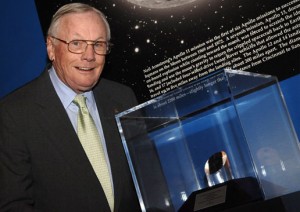 On September 22, 2011, at 10 am EDT, the House Science, Space, and Technology Committee held a hearing titled “NASA Human Spaceflight Past, Present, and Future: Where Do We Go From Here?”, which has been webcast on the committee’s site. The witnesses included former astronauts Neil Armstrong and Gene Cernan, as well as former NASA administrator Mike Griffin and MIT planetary sciences professor Maria Zuber, the principal investigator of NASA’s recently-launched GRAIL lunar orbiter mission. On September 23, 2011, NASA released an official statement as a reply to Armstrong’s speech. We reproduce here the testimony of Neil Armstrong, Apollo astronaut and first men on the Moon, and NASA’s answer for their relevance with current debate on the future of NASA human space exploration program.
On September 22, 2011, at 10 am EDT, the House Science, Space, and Technology Committee held a hearing titled “NASA Human Spaceflight Past, Present, and Future: Where Do We Go From Here?”, which has been webcast on the committee’s site. The witnesses included former astronauts Neil Armstrong and Gene Cernan, as well as former NASA administrator Mike Griffin and MIT planetary sciences professor Maria Zuber, the principal investigator of NASA’s recently-launched GRAIL lunar orbiter mission. On September 23, 2011, NASA released an official statement as a reply to Armstrong’s speech. We reproduce here the testimony of Neil Armstrong, Apollo astronaut and first men on the Moon, and NASA’s answer for their relevance with current debate on the future of NASA human space exploration program.
NASA Human Space Flight Past, Present, and Future: Where Do We Go From Here?
Written Testimony of Neil A. Armstrong
Before the Committee of Commerce, Science, and Technology
United States House of Representatives
September 22, 2011
Chairman Hall, Ranking Member Johnson, Members of the Committee: Thank you for giving me the opportunity to present my perspective on the state of the American human space exploration efforts. You have provided questions on several specific issues, and I am delighted to respond.
NASA Authorization Act of 2010
The past year has been frustrating to NASA observers, as they tried to understand NASA’s plans and progress. The NASA leadership enthusiastically assured the American people that the agency was embarking on an exciting new age of discovery in the cosmos. But the realities of the termination of the Shuttle program, the cancellation of existing rocket launcher and spacecraft programs, the layoffs of thousands of aerospace workers, and the outlook for American space activity throughout the next decade were difficult to reconcile with the agency assertions.
Despite the departures of significant NASA employees, observers knew that the agency still contained many excellent engineers and analysts who would certainly be working diligently to create useful plans and strategies.
After the initial proposed cancellation of the Constellation Ares launchers and Orion and Altair spacecraft, this committee and other Representatives, Senators, and concerned citizens worked diligently to find alternatives for the now missing essential elements of the US space strategy.
We will have no American access to, and return from, low Earth orbit and the International Space Station for an unpredictable length of time in the future. For a country that has invested so much for so long to achieve a leadership position in space exploration and exploitation, this condition is viewed by many as lamentably embarrassing and unacceptable.
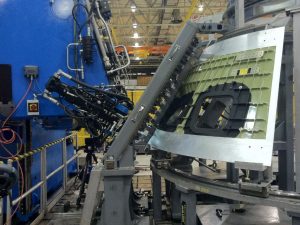
First weld for the Multi-Purpose Crew Module at the Michoud Assembly Facility on September 9, 2011 (Credits: NASA).
You were instrumental in modifying the administration’s proposed five year study of a heavy lift rocket to the immediate initiation of its design and construction. And you observed the metamorphosis of the canceled Orion first into a Crew Rescue vehicle and thereafter into the Multi Purpose Crew Vehicle.
So, much has been accomplished. But NASA, hobbled by cumbrous limitations, has been unable to articulate a master plan that excites the imagination and provides a semblance of predictability to the aerospace industry.
We will have no American access to, and return from, low Earth orbit and the International Space Station for an unpredictable length of time in the future. For a country that has invested so much for so long to achieve a leadership position in space exploration and exploitation, this condition is viewed by many as lamentably embarrassing and unacceptable.
NASA, showing some increased flexibility, recently announced that they would assist ATK in the development of the Liberty rocket, which they seemed to have ignored some months ago. This might engender another possible provider of access to low earth orbit and the International Space Station.
The larger human exploration goals, however, lie beyond LEO: Luna, the lunar Lagrangian points, Mars and its natural satellites, and Near Earth Objects including meteoroids, comets, and asteroids.
Goals and Priorities
There will always be things to do in Low Earth Orbit: Earth observation, imagery and measurement programs, and others, both from the International Space Station and from spacecraft in other orbital inclinations. And some of them can properly be described as exploration. If and when American has available access to LEO, we will be able to fulfill those opportunities.
The larger human exploration goals, however, lie beyond LEO: Luna, the lunar Lagrangian points, Mars and its natural satellites, and Near Earth Objects including meteoroids, comets, and asteroids. Last year I testified to this committee on the rationale for selecting Luna and its environs as the preferred initial option for America’s exploration beyond Earth orbit. All that I have learned in the past year has just reinforced that opinion.
Predicting the future is inherently risky, but the proposed Space Launch System (SLS) includes many proven and reliable components which suggests that its development could be relatively trouble free. If that proves to be so, it would bode well for exploration.
The severe reductions in space activity such as the discontinuance of Space Shuttle operations, the cancellation of the Ares rockets, the end of the Minuteman refurbishment programs, the cancellation of the Altair spacecraft and the kinetic energy interceptor, and slowdowns in a variety of related projects have caused substantial erosion in many critical technology areas and are creating negative economies of scale cost increases for both liquid and solid rocket producers.
Risks and Challenges for the Aerospace Industry
In order to get a comprehensive perspective on this issue, I asked a number of senior industry leaders for their observations on the matter. This narrative is a compilation of my thoughts and their responses.
The uncertainties associated with the radical changes in space plans and policies of the last two years contributed to a substantial erosion of the United States’ historically highly regarded space industrial base. Thousands of jobs have been lost, and the space component of the industry is perceived as unstable, discouraging students from considering preparing themselves for entry into this exciting but demanding career path.
The United States aerospace industry has long enjoyed the reputation of building the best and most advanced aircraft in the world. Consequently, it is the number one contributor to the nation’s balance of payments, providing over 50 billion dollars in positive trade balance last year.
More than 60 countries are investing in space. China has sent Taikonauts into orbit and tells of their plans to fly to the moon. India is planning human space flight. Cargo to the International Space Station is flown on Russian, Japanese, or European craft. Americans currently have no access to space on American rockets or in American spacecraft.
Aerospace industry jobs, characteristically, require high skill and provide relatively high compensation. The Aircraft Industry Association reports Aerospace provides more than 600.000 skilled middle-class jobs and the industry supports more than 2 million middle class jobs and 30,000 suppliers from all 50 states. NASA and its supporting contractors employ hundreds of thousands of highly skilled engineers and technicians in 44 states
A substantial current and long range threat is, and will be, the downward trend in engineering degrees granted in this country and the substantial increase in such graduates in other parts of the world. Equally disconcerting are the projections for reductions in individuals grounded in science, technology, engineering, and mathematics, the so-called STEM disciplines. The number of such individuals in other countries is growing rapidly. They become the innovators and are largely responsible for the increasing quantity and quality of new aircraft and spacecraft emerging in foreign lands.
U.S. passengers on regional jets fly almost exclusively foreign aircraft. In 2008 and 2009, over half of U.S. patents were awarded to overseas companies. More than 60 countries are investing in space. China has sent Taikonauts into orbit and tells of their plans to fly to the moon. India is planning human space flight. Cargo to the International Space Station is flown on Russian, Japanese, or European craft. Americans currently have no access to space on American rockets or in American spacecraft.
The severe reductions in space activity such as the discontinuance of Space Shuttle operations, the cancellation of the Ares rockets, the end of the Minuteman refurbishment programs, the cancellation of the Altair spacecraft and the kinetic energy interceptor, and slowdowns in a variety of related projects have caused substantial erosion in many critical technology areas and are creating negative economies of scale cost increases for both liquid and solid rocket producers.
Most importantly, public policy must be guided by the recognition that we live in a technology driven world where progress is rapid and unstoppable. Our choices are to lead, to try to keep up, or to get out of the way. A lead, however earnestly and expensively won, once lost, is nearly impossible to regain.
The key to the success of American investment in space exploration is a clearly articulated plan and strategy supported by the Administration and the Congress and implemented with all the consistency that the vagaries of the budget will allow. Such a program will motivate the young toward excellence, support a vital industry, and earn the respect of the world.
America cannot maintain a leadership position without human access to space. After a half century in which American’s were being launched into Earth orbit and beyond, Americans find themselves uncertain of when they can reasonably expect our astronauts to travel to the International Space Station or other off the earth destinations in other than a foreign built and commanded spacecraft.
Observations and Recommendations
a) Above all else, a unified sense of purpose is a principal component necessary for success. It must be more detailed than a vision (a mental image of what the future will or could be like) but not so detailed that it cannot be modified when circumstances dictate. In the Apollo program there was a goal (land a man on the moon and return him safely to Earth by the end of the decade) that was easily understood by all but gave the participants a great deal of flexibility in determining the preferred methods for its execution.
b) America cannot maintain a leadership position without human access to space. After a half century in which American’s were being launched into Earth orbit and beyond, Americans find themselves uncertain of when they can reasonably expect our astronauts to travel to the International Space Station or other off the earth destinations in other than a foreign built and commanded spacecraft. Proposals exist for continuing to fly the Space Shuttle under commercial contract. Such proposals should be carefully evaluated prior to allowing them to be rendered ‘not flightworthy’ and their associated ground facilities to be destroyed. NASA recently (apparently in a change from their previous position) announced that they were agreeable to assisting a contractor with their proposed “Liberty rocket”. This is encouraging as it presents the possibility of another contender for powering the Multi Purpose Crew Vehicle or other spacecraft to low Earth Orbit. This proposal should also be carefully evaluated.
c) Last year, before this committee, I briefly described the case for returning to the moon. During the intervening months, that case has become, if anything, even more compelling. While visiting an asteroid has been discussed for many decades and the value of reducing the threat of near Earth objects colliding with Earth is unquestioned, the potential value of returning to the moon is substantially higher. For an informative analysis of the subject see the Air and Space website http://blogs.airspacemag.com/moon/
d) Last week, NASA announced their proposal for the new heavy lift vehicle that had been ordered by the Congress in the 2010 Authorization bill. Administrator Bolden announced:
“This launch vehicle decision is the culmination of a months-long, comprehensive review of potential designs to ensure that the nation gets the best possible rocket for the investment– one that is not only powerful but is also evolvable so it can be adapted to different missions as opportunities arise and new technologies are developed.
The rocket will use a liquid hydrogen and liquid oxygen fuel system, where RS-25D/E engines will provide the core propulsion and the J2X engine is planned for use in the upper stage. There will be a full and open competition to develop the boosters based on performance requirements. Its early flights will be capable of lifting 70-100 metric tons before evolving to a lift capacity of 130 metric tons.”
This proposal appears to meet the intent of the Congressional mandate. It is not a revolutionary proposal. The National Space Strategy of the mid 1980s outlined plans to design and build a new expendable heavy booster with the ability to lift 136 metric tons into Earth orbit. In identifying the new rocket as being “evolvable so it can be adapted to different missions as opportunities arise and new technologies are developed”, Administrator Bolden make an excellent point. The ability to assemble various rocket stages into a variety of different configurations to meet ever changing needs is vitally important and often under appreciated.
The Atlas, Titan, Saturn, and Ares rocket families all were able to lift a wide range of payload weights. The Atlas and Atlas Centaur delivered the Mercury Astronauts and many satellites into orbit, the Surveyor to the lunar surface, Mariners to a number of planets, the Viking to Mars, and probes to Jupiter and Saturn. The Titan and Titan series carried the Gemini astronauts and Voyagers to Jupiter, Saturn, and Uranus. The Saturn 1B and V carried the Apollo spacecraft to Earth orbit and the Moon, the Skylab and the Apollo-Soyuz. The Ares series, although limited to only one flight prior to cancellation, showed promise of wide versatility and, because of commonality in design, cost advantages in the larger rocket development program.
As the future rocket family develops, commonality and compatibility characteristics should be paramount in the design process.
Winston Churchill famously stated: “The Americans will always do the right thing after they have exhausted all the alternatives”. In space fight, we are in the process of exhausting alternatives. I am hopeful that, in the near future, we will be doing the right thing.
Summary
In summary, some significant progress has been achieved during the past year. However, NASA, with insufficient resources, continues to try to fulfill the directives of the Administration and the mandates of the Congress. The result is a fractious process that satisfies neither. The absence of a master plan that is understood and supported by government, industry, academia and society as a whole frustrates everyone. NASA itself, riven by conflicting forces and the dashed hopes of canceled programs, must find ways of restoring hope and confidence to a confused and disconsolate work force. The reality that there is no flight requirement for a NASA pilot-astronaut for the foreseeable future is obvious and painful to all who have, justifiably, taken great pride in NASA’s wondrous space flight achievements during the past half century.
Winston Churchill famously stated: “The Americans will always do the right thing after they have exhausted all the alternatives”. In space fight, we are in the process of exhausting alternatives. I am hopeful that, in the near future, we will be doing the right thing.
I thank the committee for giving me this opportunity and thank you for all you do to advance American human space flight.
NASA Statement of September 23, 2011
Today’s American space explorers are leading the way to even farther destinations that will one day allow the first astronauts to set foot on Mars.
Source NASA: “We respect the contributions Neil Armstrong and Gene Cernan have made in service to our country, and thank them for helping to pave the way for our exciting future forward. Just as their ambitious missions captivated the nation’s attention nearly a half-century ago, today’s American space explorers are leading the way to even farther destinations that will one day allow the first astronauts to set foot on Mars.
It is a bold vision laid out by President Obama and Congress, in bi-partisan fashion, to pioneer new frontiers, push the bounds of exploration, and test the limits of innovation and technological development. It is a plan that will ensure America’s continued leadership in space with science missions that will rewrite textbooks, invests in innovative technologies that will put Americans to work in new jobs, and develops new space vehicles to explore farther into the universe than any nation has ever gone before.”
– Statement by Rep. Jerry Costello
– Statement by Rep. Eddie Bernice Johnson
– Testimony by Neil Armstrong
– Testimony by Eugene Cernan
– Testimony by Maria Zuber
– Testimony by Michael Griffin

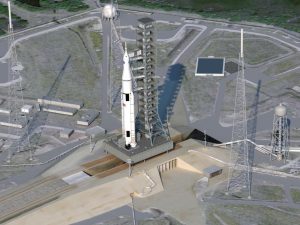
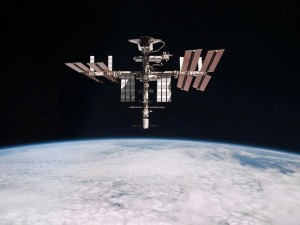
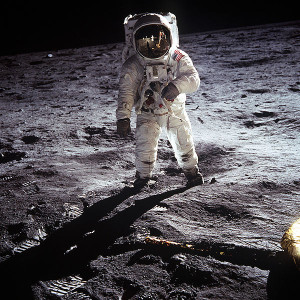
















































































































![A trajectory analysis that used a computational fluid dynamics approach to determine the likely position and velocity histories of the foam (Credits: NASA Ref [1] p61).](https://www.spacesafetymagazine.com/wp-content/uploads/2014/05/fluid-dynamics-trajectory-analysis-50x50.jpg)



Leave a Reply